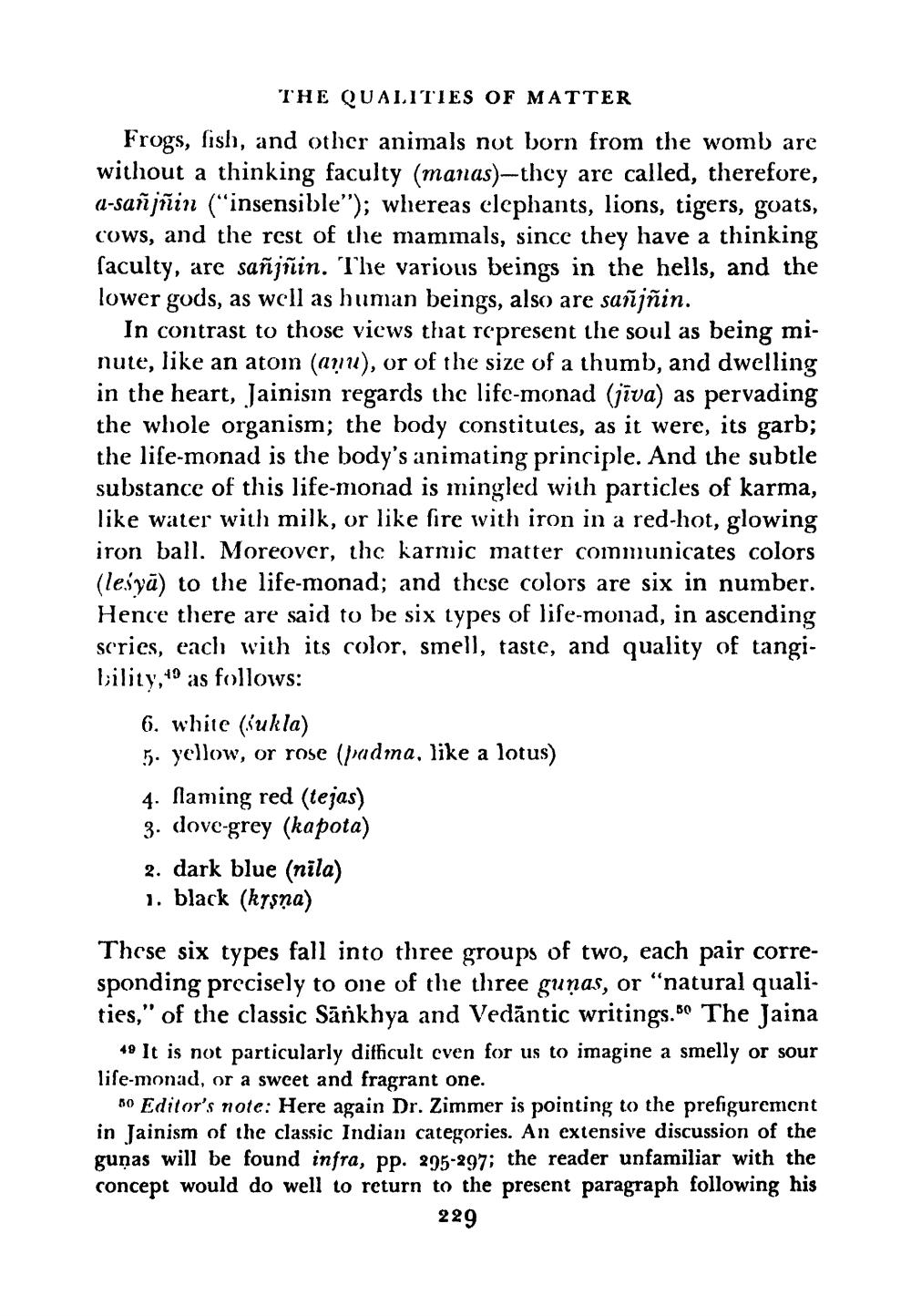________________
THE QUALITIES OF MATTER Frogs, fish, and other animals not born from the womb are without a thinking faculty (manas)--they are called, therefore, a-saññin ("insensible"); whereas clephants, lions, tigers, goats, cows, and the rest of the mammals, since they have a thinking faculty, are saññin. The various beings in the hells, and the lower gods, as well as human beings, also are sañjñin.
In contrast to those views that represent the soul as being minute, like an atom (aņu), or of the size of a thumb, and dwelling in the heart, Jainisin regards the lifc-monad (jīva) as pervading the whole organism; the body constitutes, as it were, its garb; the life-monad is the body's animating principle. And the subtle substance of this life-monad is mingled with particles of karma, like water with milk, or like fire with iron in a red-hot, glowing iron ball. Moreover, the karmic matter communicates colors (leíyā) to the life-monad; and these colors are six in number. Hence there are said to be six types of life-monad, in ascending scries, each with its color, smell, taste, and quality of tangibility,19 as follows:
6. white (sukla) 5. yellow, or rose (padma, like a lotus) 4. Naming red (tejas) 3. dove-grey (kapota) 2. dark blue (nila)
1. black (kyşņa) These six types fall into three groups of two, each pair corresponding precisely to one of the three guņas, or “natural qualities," of the classic Sānkhya and Vedāntic writings. The Jaina
49 It is not particularly difficult even for us to imagine a smelly or sour life-monad, or a sweet and fragrant one.
60 Editor's note: Here again Dr. Zimmer is pointing to the prefigurement in Jainism of the classic Indian categories. An extensive discussion of the gunas will be found infra, pp. 295-297; the reader unfamiliar with the concept would do well to return to the present paragraph following his
229




